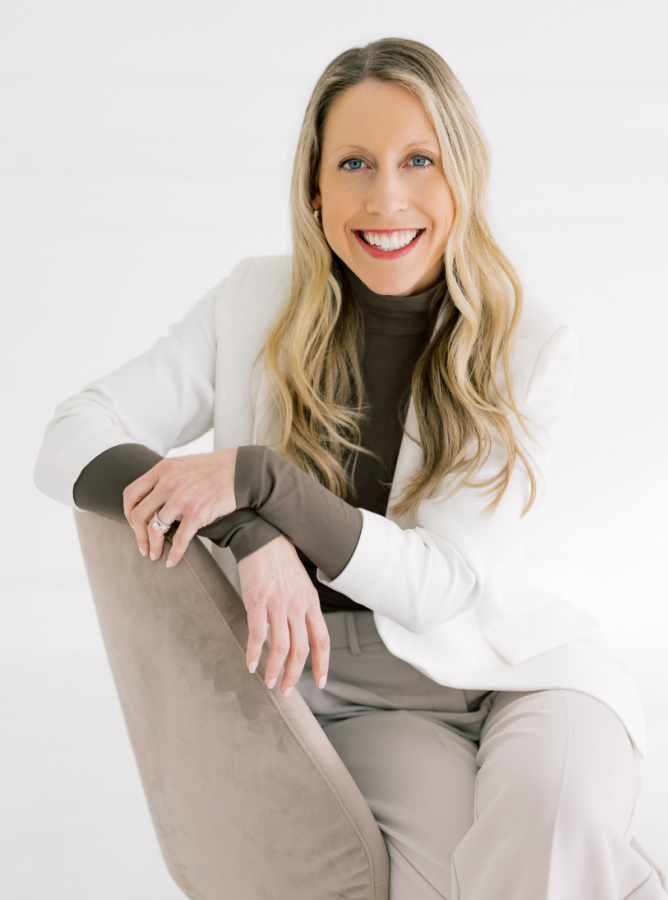At the not-so-old age of 27, I found myself sleepwalking through the daily motions of life. Busy and working hard in corporate America, I was checking all the boxes but feeling this empty void.
Something was missing, and I wondered if I was climbing a ladder I didn’t want to be on. Fast forward to today, life is bursting at the seams with three little ones and a business I’ve built around my dreams.
But let’s be real, it’s a journey that’s as messy as it is beautiful, especially when big changes like adding a third child to the mix come into play. And, as many women will agree, that journey is often accompanied by an invisible mental load.
Recently, I sat down with Dr. Morgan Cutlip on the Dream It Do It podcast to dive into a topic that resonates deeply with many of us: the invisible load that moms carry and how it impacts our lives and relationships.
This conversation was enlightening, and I couldn’t help but reflect on how this invisible mental load weaves into my own journey of navigating big life changes.
The Invisible Load Unpacked
In our discussion, Dr. Cutlip shared insights into the mental load that women—and particularly mothers—often carry. Whether you’re a working mom, stay-at-home mom, or somewhere in between, the mental load doesn’t discriminate.
It’s the never-ending to-do list in our minds, the constant future planning, the emotional labor of maintaining household harmony and this all while managing our own personal and professional lives.
From my own experience, transitioning from two to three kids didn’t just require rearranging my physical space and schedule; it also meant expanding my mental capacity. With my oldest at four years old and now eager to help, and a two-year-old who’s still adjusting to not being the baby anymore, my mental load has increased significantly.
From Two to Three: An Adjustment and a Blessing
When our third baby, William, was born, our family dynamics shifted once again. As any parent knows, each addition to the family is a new rhythm to learn. The jump from two to three kids felt surprisingly more manageable than one to two, but not without its challenges.
It was less about learning to juggle and more about orchestrating a symphony where the instruments are sometimes off-key.
Bringing a new baby into the family meant a new chapter for each one of us. Here’s how our kids adapted:
Our Four-Year-Old’s Perspective
- Helper Instincts Activated: Our older daughter displayed an immediate urge to be helpful. From fetching diapers to holding the baby, she embraced her big sister role with enthusiasm.
- Undivided Attention: She relished one-on-one time with me or Steve, ensuring she felt included in the bustling new family setup.
Our Two-and-a-Half-Year-Old’s Adjustment
- Building Patience: Slowly but surely, she learned to understand the gentle pace of a newborn’s life.
- Expectations vs. Reality: Our younger daughter thought her new sibling would be ready to play upon arrival, and the adjustment took a bit of explaining and adjusting.
For our family, communicating openly was key. Steve, my husband, and I made the conscious decision to over-communicate. Whether it’s our evening check-in while washing bottles or having candid conversations about who feels more worn out that day, these moments help align us and remind us that we’re in this together.
Dr. Cutlip emphasized the importance of teamwork and open conversations in alleviating the mental load, and I couldn’t agree more.
Dr. Morgan Cutlip: “The thing is that we see time and time again in the research is that even when women work full-time, part-time, doesn’t matter, or they’re a mom that’s at home with their kids, they are still carrying the bulk of the mental load of home and family life, and that’s why it starts to really affect relationships.”
Grace in the Messiness
In navigating these changes, an important mantra has been lowering the standards and giving myself grace. Dr. Cutlip’s book talks about how critical it is to recognize the effort we’re putting in and to communicate that to our partners.
It’s not always easy to express our needs, especially when we’re neck-deep in taking care of everyone else. There were moments postpartum where I felt those familiar baby blues creeping in. Allowing myself to sit with my emotions, talk them out with Steve, and reach out to trusted professionals when needed was crucial.
One of my takeaways from this recent journey is the realization that trying to “do it all” is a myth that needs debunking. It’s okay to call in reinforcements, ask for help, or unapologetically step back when needed. In fact, it’s necessary.
Balancing Career and Motherhood
When it comes to my career, it’s all about embracing that I’m in control and can design my lifestyle to fit my family and my business aspirations. Even though I am technically on “maternity leave,” the beauty (and challenge) of being self-employed means that I decide how and when I engage with work.
I’ve learned, through trial and error, how to prepare for these busy seasons by planning ahead and batching work.
With three kids now, the balancing act has intensified, but it’s also given me more motivation to succeed. I batched recorded podcasts, set long-range plans in motion, and leaned heavily on my virtual assistant to keep things moving along smoothly while I focused on my family.
Yet, the joy of hopping into a call or recording an episode—even with a newborn in tow—is a gratifying reminder of why I crafted this unconventional career path in the first place.
Dr. Cutlip and I discussed the critical role our partners play in supporting this balance. Encouraging our spouses to understand the weight of our mental load and inviting them into solutions is so vital.
Whether it’s having Steve take initiative with the two older kids or simply appreciating the behind-the-scenes work I do, his active participation is crucial.
5 strategies for balancing family life
- Communicate Openly and Often: Regular, honest communication with your partner can make all the difference in managing the mental load. By over-communicating your needs, emotions, and logistics, you ensure you’re both on the same page and can support each other effectively.
- Delegate and Ask for Help: Realize that you don’t have to do it all yourself. Whether it’s hiring help, leaning on family members, or enlisting the support of your partner, delegating tasks can help alleviate stress and allow you to focus on what’s most important.
- Plan Ahead and Batch Work: In the lead-up to big life changes, such as having a baby, plan as much as possible. Batch work whether it’s preparing meals, batching podcasts, or scheduling out appointments to ensure smoother transitions and less chaos.
- Embrace Flexibility: Allow yourself the grace to be flexible in both your personal life and career. Understand that priorities may shift, and that’s okay. Adjust your expectations and be willing to adapt to the current season of life.
- Acknowledge Your Feelings and Seek Support: It’s important to admit when you’re feeling overwhelmed and to seek support when needed, whether through professional help or a supportive community. Recognizing your emotions is the first step in managing them.
From Home Culture to Social Change
One of the most impactful parts of our podcast conversation was the idea that cultural change begins at home. By addressing and distributing the mental load more equitably, we’re not just improving our own lives—we’re modeling a new norm for our children.
This bottom-up approach to societal change starts with small steps: talking openly with our partners, sharing responsibilities, and, perhaps most importantly, recognizing that the work we do—whether in the home or in the office—is equally valuable.
As Dr. Cutlip so eloquently put it, the time and energy we invest in our family and relationships are as significant as any dollar amount in the bank. This perspective not only helps alleviate some of the comparisons that fuel resentment but also redefines success in a more holistic way.
Looking Forward
As I navigate life with our growing family, the themes from our podcast continue to resonate with me. Lowering expectations, opening up the lines of communication, and acknowledging the mental load are not just about surviving motherhood—they’re about thriving in it.
By sharing my experiences and learning from experts like Dr. Cutlip, my hope is to inspire more women to dream big, take action, and create lives they love, even amidst the chaos and joy of raising a family.
So here’s to all of us managing those multiple roles, carrying occasionally overwhelming mental loads, and always striving to find joy in the journey. We are all a work in progress, navigating big life changes one day at a time.
Thank you for joining me as I share these insights, and I hope they bring a bit of comfort and camaraderie to your own journey. Let’s continue to dream big, take action, and build lives we love. Here’s to thriving—not just surviving!


